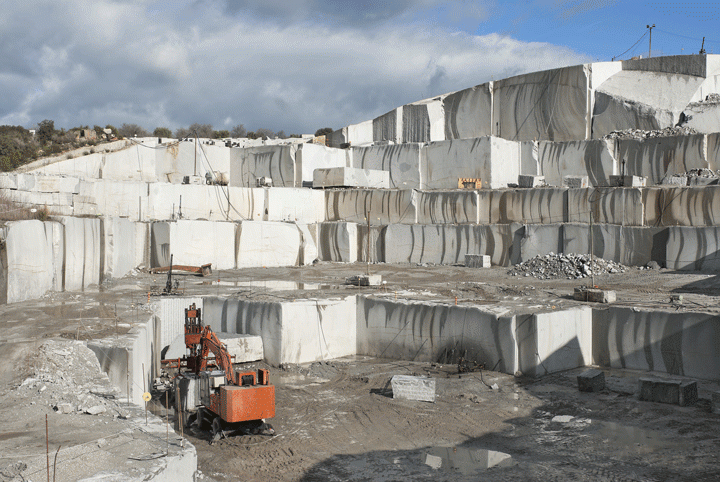Granite Quarries in South Africa Marvels: Exploring the Quarry Landscape
Granite Quarries in South Africa Marvels: Exploring the Quarry Landscape
Blog Article
Uncovering the Rich History and Sustainable Practices of Granite Quarrying
As we depend on the precipice of revealing the elaborate tapestry of granite quarrying, a journey via time exposes not just the physical act of extracting stone yet also the cultural and historical significance woven right into the really material of this method. From the ancient beginnings that laid the foundation for contemporary quarrying techniques to the sustainable methods that are shaping the future of this industry, each sculpt mark on granite surfaces tells a tale waiting to be uncovered (granite quarries in south africa). The legacy of granite quarrying stretches much past simple removal; it is a testament to human resourcefulness, resilience, and the enduring appeal of this stunning rock
Ancient Origins of Granite Quarrying
Dating back to old worlds, the practice of quarrying granite has actually been an integral component of human history and architectural advancement. The earliest proof of granite quarrying days back to old Egypt, where massive pyramids and detailed sculptures were crafted from this durable stone. The Egyptians utilized primitive devices to remove granite blocks from quarries, showcasing the significance of this material in their huge buildings.
Relocating forward in history, the Greeks additionally made considerable contributions to the quarrying of granite. The Greeks made use of granite in different architectural marvels, such as holy places and statues, demonstrating their ability in shaping and carving this hardy stone. The Romans better refined the methods of quarrying granite, using innovative tools like blades and hammers to essence and shape granite for their renowned structures.
Via the centuries, the method of quarrying granite has evolved, with modern technologies enhancing effectiveness while preserving the timeless appeal of this all-natural rock - granite quarries in south africa. From old people to contemporary building contractors, the tradition of granite quarrying continues to form our world
Evolution of Quarrying Methods
The advancement of quarrying strategies has been noted by a continual progression towards greater performance and precision in removing granite. Early quarrying techniques included hand-operated labor with standard devices such as blades, hammers, and wedges to remove granite blocks from the earth.
In even more recent times, the advent of machinery reinvented the quarrying industry, allowing faster extraction rates and raised efficiency. Technologies such as ruby wire saws, high-pressure water jets, and pneumatic drills have ended up being basic in contemporary quarries, permitting for specific cutting and decreased waste. Additionally, improvements in computer-controlled devices and 3D modeling have enhanced quarrying procedures, resulting in minimal environmental effect and enhanced sustainability methods. As the need for granite proceeds to rise, the advancement of quarrying strategies remains indispensable to conference industry needs efficiently and sustainably.
Cultural Value of Granite
Granite holds an extensive cultural importance across different civilizations due to its enduring presence in architectural work of arts and respected monoliths. The social value of granite expands past its physical attributes; it personifies durability, security, and timelessness, making it a sign of sustaining legacies and customs.

Lasting Practices in Quarrying
In the middle of the rich history of granite quarrying and its social significance exists an expanding emphasis on sustainable practices within the market. As ecological awareness and worries regarding resource deficiency have actually enhanced internationally, the quarrying market has significantly embraced sustainable approaches to reduce its effect on the setting and surrounding communities.

Moreover, improvement and rehabilitation of quarry websites post-extraction are important to sustainable practices. By restoring quarried locations to an all-natural or helpful state, such as developing wild animals environments or leisure areas, quarriers can balance out the environmental impact of their operations and contribute favorably to the local ecosystem.
Legacy of Granite Quarrying
With a historical background steeped in craftsmanship and industrial progress, what sustaining impact has granite quarrying left on the landscape of modern-day society? The heritage of granite quarrying transcends simple extraction methods; it has shaped building marvels, urban landscapes, and social heritage worldwide. The resilient nature of granite has actually made it a favored option for monuments, buildings, and infrastructure, standing as a testament to the ability and virtuosity of quarry workers throughout generations.
Additionally, the financial footprint of granite quarrying can not be overlooked. The industry continues to offer employment possibility and drive neighborhood economies in areas where granite removal is widespread. It has actually likewise stimulated technological improvements in quarrying strategies and equipment, causing much more effective and sustainable techniques.
In terms of sustainability, the legacy of granite quarrying consists of efforts to reduce environmental impacts with improvement jobs and accountable resource monitoring. By balancing economic rate of interests with ecological stewardship, the industry makes every effort to ensure that future generations can proceed to take advantage of this long-lasting natural resource.
Verdict

Report this page